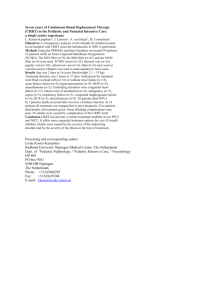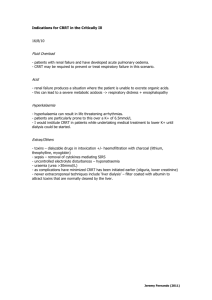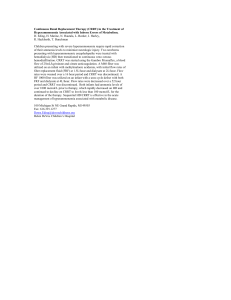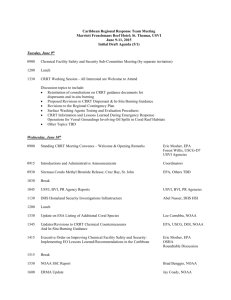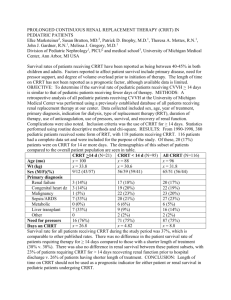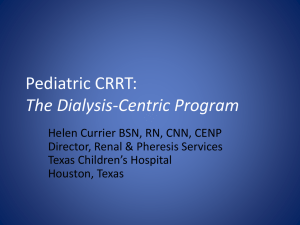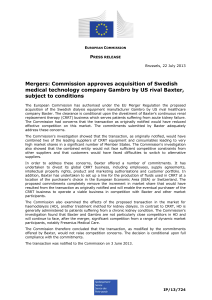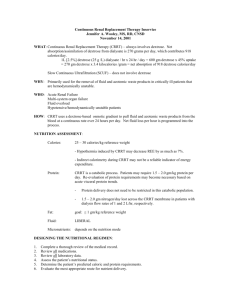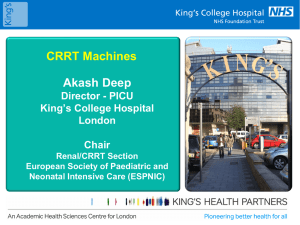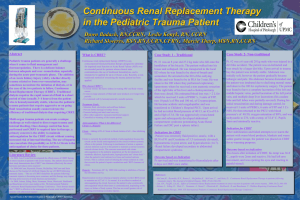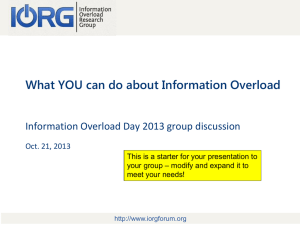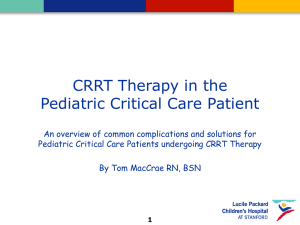Polysulfone Filter Use in Neonatal Continuous Renal Replacement
advertisement
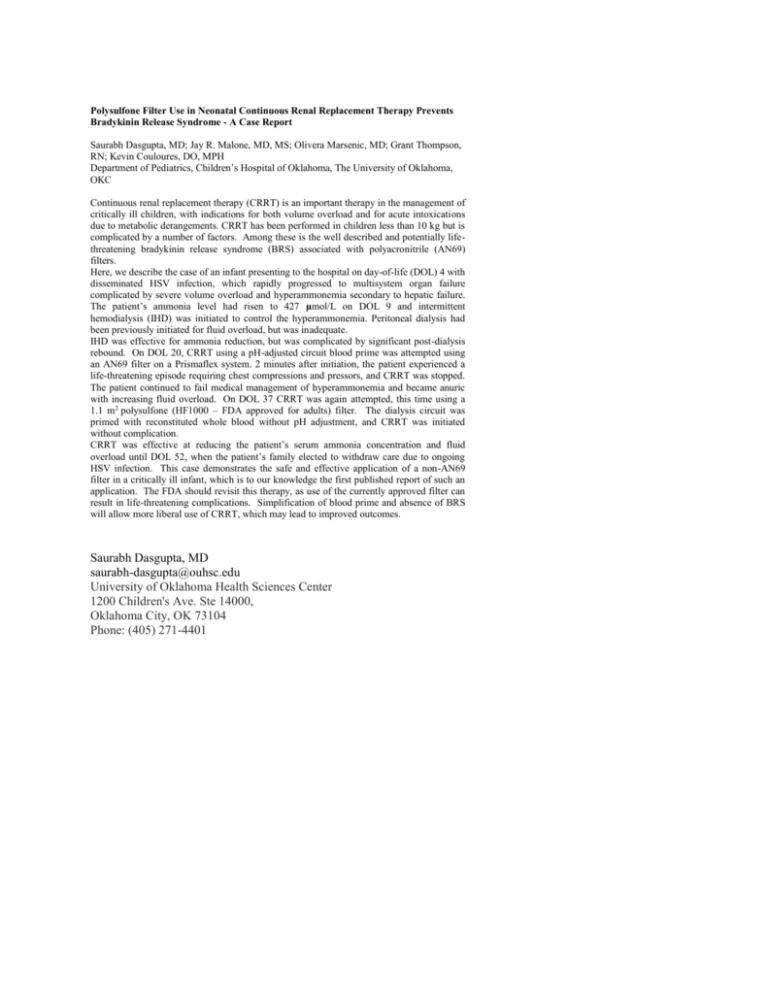
Polysulfone Filter Use in Neonatal Continuous Renal Replacement Therapy Prevents Bradykinin Release Syndrome - A Case Report Saurabh Dasgupta, MD; Jay R. Malone, MD, MS; Olivera Marsenic, MD; Grant Thompson, RN; Kevin Couloures, DO, MPH Department of Pediatrics, Children’s Hospital of Oklahoma, The University of Oklahoma, OKC Continuous renal replacement therapy (CRRT) is an important therapy in the management of critically ill children, with indications for both volume overload and for acute intoxications due to metabolic derangements. CRRT has been performed in children less than 10 kg but is complicated by a number of factors. Among these is the well described and potentially lifethreatening bradykinin release syndrome (BRS) associated with polyacronitrile (AN69) filters. Here, we describe the case of an infant presenting to the hospital on day-of-life (DOL) 4 with disseminated HSV infection, which rapidly progressed to multisystem organ failure complicated by severe volume overload and hyperammonemia secondary to hepatic failure. The patient’s ammonia level had risen to 427 μmol/L on DOL 9 and intermittent hemodialysis (IHD) was initiated to control the hyperammonemia. Peritoneal dialysis had been previously initiated for fluid overload, but was inadequate. IHD was effective for ammonia reduction, but was complicated by significant post-dialysis rebound. On DOL 20, CRRT using a pH-adjusted circuit blood prime was attempted using an AN69 filter on a Prismaflex system. 2 minutes after initiation, the patient experienced a life-threatening episode requiring chest compressions and pressors, and CRRT was stopped. The patient continued to fail medical management of hyperammonemia and became anuric with increasing fluid overload. On DOL 37 CRRT was again attempted, this time using a 1.1 m2 polysulfone (HF1000 – FDA approved for adults) filter. The dialysis circuit was primed with reconstituted whole blood without pH adjustment, and CRRT was initiated without complication. CRRT was effective at reducing the patient’s serum ammonia concentration and fluid overload until DOL 52, when the patient’s family elected to withdraw care due to ongoing HSV infection. This case demonstrates the safe and effective application of a non-AN69 filter in a critically ill infant, which is to our knowledge the first published report of such an application. The FDA should revisit this therapy, as use of the currently approved filter can result in life-threatening complications. Simplification of blood prime and absence of BRS will allow more liberal use of CRRT, which may lead to improved outcomes. Saurabh Dasgupta, MD saurabh-dasgupta@ouhsc.edu University of Oklahoma Health Sciences Center 1200 Children's Ave. Ste 14000, Oklahoma City, OK 73104 Phone: (405) 271-4401
